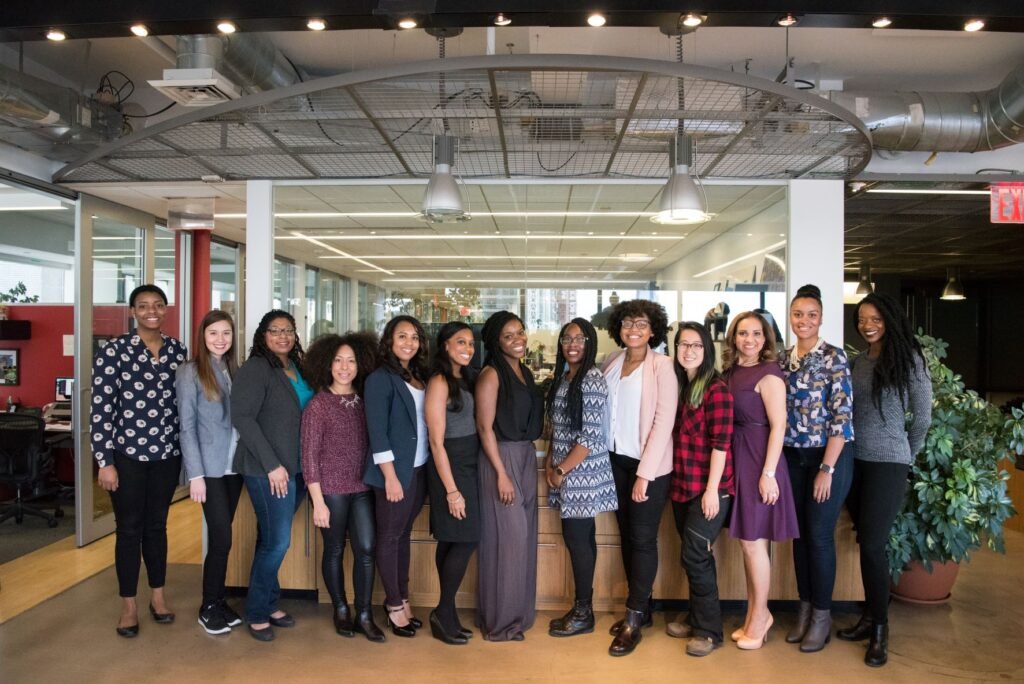
HR management has been reshaped in more ways than one over the past few years. HR will contribute value to the transformation it has been witnessing in recent years, whether it is by implementing flexible work models or promoting employee well-being. But how will HR contribute to that transformation? Which are the pillars to watch for? In this article, you can gain a better understanding of the future of HR trends and how they will affect work, workers, and companies.
Hybrid offices
Hybrid offices are office arrangements in which employees of a company sometimes work remotely and sometimes at an office location. The goal is to provide workers and employers with an optimal working environment. A hybrid office can offer a flexible approach to organizing the workplace which will be one of the hottest HR trends in 2022. A few types in which hybrid office works are:
- Partially remote: some employees work remotely, whereas others are on site. Normally, such a situation occurs when some processes cannot be moved to a remote location for reasons of security or hardware.
- Flexible remote hours: This allows employees to work outside the office on occasion and manage their workflow.
- A coworking space: An arrangement in which employees do not have a specific desk or working space.
Employee wellness experience
Rather than the employee experience being defined by a workplace, the concept now focuses on the employee’s life experience. Organizations strive to build leadership skills and create a trusting environment among their employees and potential candidates. Employees are looking for an environment that is dependable and supportive in difficult situations, which is not surprising. As companies rethink employee benefits and engagement strategies, employee experiences undergo radical changes.
To begin with, the company will provide benefits and perks that will streamline employees’ daily lives. Getting businesses to engage their customers online will be a big priority. Team-building events with Zoom, yoga and fitness sessions, mindfulness programs – there are so many. This type of bonus shows employees that a company cares about them. When you act, and not just talk, it demonstrates you care about them when times are hard.
The process of upskilling employees
Human resource trends introduced employee upskilling a while back. Earlier this year, Udemy released a study showing that upskilling demand has grown to nearly 40% by 2020. Comparatively, this figure in 2019 was only 14%.
What are the main reasons behind upskilling becoming a key trend in HR? Companies faced challenges including staff reductions, an increase in sick days, and the shift to remote working. As a means of staying flexible and adjusting to changes in the external market, organizations will enhance their workforce’s skills and make them more competitive. A more sustainable and productive workforce will result from this approach. Initiatives designed to upskill employees can reduce turnover, motivate employees, and lower recruitment costs. Various companies have already started implementing upskilling by using a learning management system (LMS). Some of the best LMS in the market are Accord LMS, Axis Academy LMS, and many others.
Diversity, equity, and inclusion (DEI)
Many companies are finding themselves confronted with diverse employees as they manage to work remotely. Increasing diversity within a company’s team can positively impact growth, productivity, and employee motivation. Companies with highly diverse workforces make more money because diverse people can bring the best of their worlds.
In 2022, watch out for the following DEI-related HR trends :
- Redefining hiring strategy. Diversifying your workforce begins with hiring. Sourcing diverse candidates, blind recruiting, and AI-based candidate screening are recruiting tactics aimed at diversifying HR departments.
- Training programs. To combat racial and ethnic bias, anti-bias and cultural diversity training for employees will be more important. Training programs are also offered by using LMS.
- Analytics and accountability. With the help of analytical tools, you can set SMART diversity targets, monitor HR efforts, and make your workplace more inclusive. Automation tools will assist HR executives in determining diversity rates within the organization and provide actionable data to find improvement opportunities.
Emphasis on cyber security
The spread of the workforce has led to privacy breaches and increases in workplace security risks. The technology behind remote work has been blamed by numerous organizations for recent cyberattacks that affected their businesses. Because of this, organizations have raised their cyberwarfare budgets.
Many employees work remotely, posing a variety of data security risks. This includes viruses, attacks on unsecured and employee-owned computers, and identity theft. The majority of companies are working to enhance cloud security, upgrade digital plans and cybersecurity, and implement effective training programs to protect corporate assets.
Conclusion
2020 made HR reassess traditional processes to provide better employee experiences. If you want to stay ahead of the curve and make HR decisions based on data instead of intuition, choose a system that is dependable and fully customizable. That is the only way to bring the required changes to your company.
